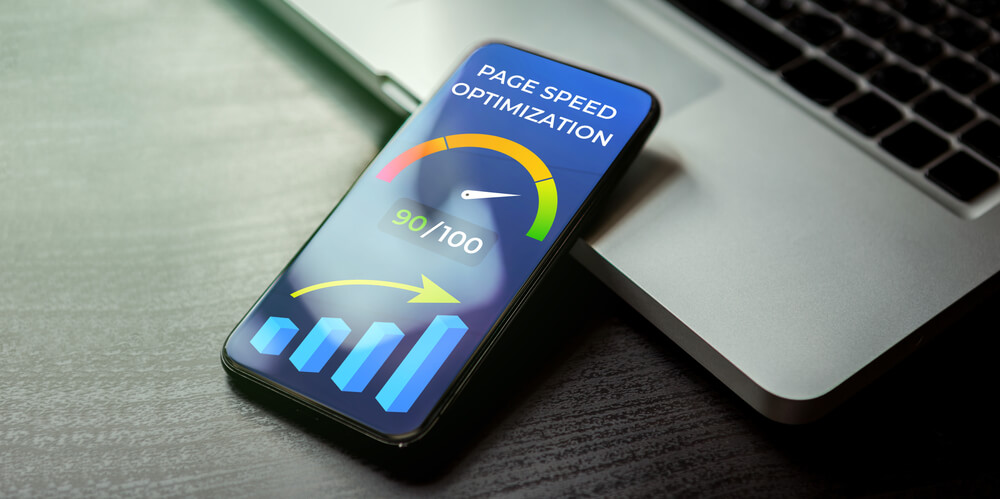
Great Mobile App Development Trends Worth Trying Right Now!
The competition in the mobile app space has never been this fierce. Can you keep up?
A mobile development agency in Chicago helps you design, run, and maintain platforms that can even lead the race. But for you to do that, it pays to be aware of the best mobile app development trends you should not miss:
- More responsive apps for foldable devices
- Platform testing and monitoring for 5G
- Super app design for the metaverse
- Application of artificial intelligence (AI) and machine learning (ML)
- Integration with other apps and devices (IoT)
Learn why these trends matter and discover ideas on how to use them to develop scalable, high-revenue apps. Let’s go!
100+ companies trust us with their mobile app development needs. Watch the video below to learn why.
1. More Responsive Apps for Foldable Devices
We have come pretty far since the first clamshell phone in 1996. Today, Microsoft Duo and Samsung Galaxy Z Flip 4 lead the foldable-device niche, and their popularity is only getting started.
IDC forecasts that foldable phone shipments' compound annual growth rate (CAGR) will hit 27.6% by 2027. By the end of the forecast period, at least 48.1 million would have been sold.
Foldable devices offer several advantages when it comes to viewing information and media. They:
- Allow users to view more content without having to scroll.
- Provide a better viewing experience, including viewing multiple windows at once
- Contribute to better ergonomics by being more compact and lightweight
- Help users digest large amounts of information or watch videos without needing to zoom in or out
All these points mean that software developers should make and optimize apps for folded and unfolded states, considering different screen sizes and layouts. A mobile development agency in Chicago, for example, includes these in its checklist:
- The app must work properly when transitioning from one state to another without disruption.
- The user interface (UI) is intuitive and easy to use across folded and unfolded states.
- The platform utilizes innovative features, such as a split-screen or picture-in-picture mode, to maximize the larger screen size when unfolding the device.
- The app allows users to customize their experience, letting them adjust their settings depending on how they use the device at any given time.
2. Platform Testing and Monitoring for 6G

As they say, the future is 6G. This next-generation network promises to deliver:
- Faster download and upload speeds
- Greater bandwidth
- More reliable connections
- Lower latency
These benefits mean a new era of productivity, entertainment, and gaming. Think about cloud-based applications, interactive virtual reality, and augmented reality. It also makes autonomous vehicles (AVs) and smart cities less fantasy and more real by serving as their primary back-end support.
But what does it mean for mobile app development? Your platform should be able to handle 5G speeds.
To do that:
- Conduct rigorous testing during development and maintain a monitoring system.
- Optimize the user interface by reducing the taps needed to complete a task or action.
- Develop low-latency apps for real-time communication and services, such as video chat and live streaming.
- Ensure your app is secure, especially since 5G networks are prone to cyber-attacks.
- Integrate sophisticated features that take advantage of 5G’s capabilities, such as augmented reality or virtual reality.
3. Super App Design for the Metaverse
The tiny island of Tuvalu hogged the headlines in 2022 for being the first country to upload itself into the metaverse to preserve its culture and history before rising sea levels due to climate change erase the country from the map.
The story is sobering but also showcases the realness and potency of the Metaverse, a virtual world home to various immersive experiences. In fact, its market size CAGR could reach a staggering 41.6% from 2023 to 2030.
The growth of the metaverse also coincides with the sprouting of “super apps,” a platform with a mish-mash of unrelated services that users need. China’s WeChat, for example, processes payments but also lets you order food, book a ride, or plan using its calendar.
Building immersive apps is challenging, making it a complex project best left to an experienced mobile app development agency in Chicago or other area where you can be sure the firm is not only up-to-date on practices but is also well aware of future expectations. Usually, the plan includes:
- Designing a visually stimulating and intuitive UI (e.g., 3D icons and motion effects).
- Integrating AR to let users manipulate virtual objects.
- Developing a robust back-end architecture that can handle simultaneous user access and data transfers.
- Creating an innovative monetization model, such as offering in-app purchases, subscriptions, or ads.
4. Application of Artificial Intelligence (AI) and Machine Learning (ML)

Artificial intelligence (AI) and machine learning (ML) have existed for years. But in 2023 and beyond, they are unleashing their potential in ways we have not previously seen, like in digital marketing.
In app development, these two interlinked technologies help elevate the user experience, keeping users engaged and adding more value to the platform. You can also use them in other services, such as:
- Facial recognition
- Biometrics for security
- Speech recognition for customer service (e.g., chatbots)
- Image recognition for better search results
- Real-time data analysis, visual analytics, and predictive analytics
- Personalization or customization of services and experiences
Adopting AI and ML in the building of a platform usually involves:
- Gathering and processing important data to give insights into user behavior
- Creating an app architecture where AI can send various signals, such as identity verification, pattern recognition, and so on
- Implementing the algorithms needed to make the app intelligent
- Setting up a system for continual learning (e.g., refining the algorithms)
5. Integration with Other Apps and Devices (IoT)
While the Internet of Things (IoT) is not new, it will not fizzle out either. Instead, the number of connected devices could almost triple from 9.76 billion in 2020 to 29.42 billion by 2030.
And we have already seen many examples of these, even in highly regulated industries such as healthcare. Medical-related apps can now:
- Connect with a patient’s vital signs monitor
- Collect data from wearable devices
- Share data between doctors, nurses, and other healthcare professionals in real time
- Integrate with other HIPAA-compliant healthcare applications and electronic health records
To capitalize on IoT, your stand-alone app should be capable (and ready) to co-exist with and even run on other platforms and devices. It must also be resilient and scalable enough to adapt quickly to emerging and new technologies.
The best mobile app development agency in Chicago will bring these innovations to life through:
- Integrating advanced features such as real-time data processing, remote controlling, location tracking, etc.
- Maximizing mobile development features
- Building application programming interfaces (APIs) or working on existing ones to increase the utility of their application
- Creating innovative solutions using AI, ML, and AR technologies
Summing Up
The future of app development is more than just shaking off the pandemic’s cobwebs. It is about leaping forward and embracing the newest technologies, such as the metaverse, AI/ML, AR, IoT, and super apps, to enhance user experiences.
Although it could be hard to keep up with all these trends, partnering with an experienced mobile app development agency in Chicago can help you move faster without compromising your goals.
Digital Authority Partners (DAP) specializes in creating custom digital products that can help you compete aggressively against others and take the lead. Contact us today for more information or a free consultation.
Want To Meet Our Expert Team?
Book a meeting directly here




